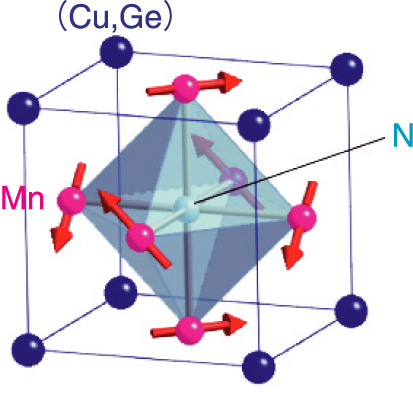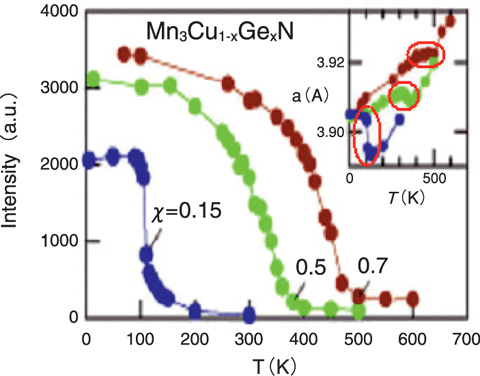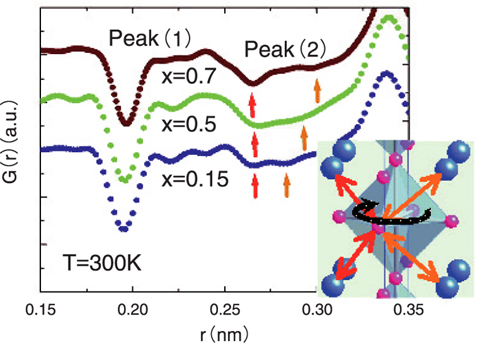
Fig.4-14 Crystal and magnetic structures of Mn3Cu1-xGexN

Fig.4-15 Temperature (T) dependences of intensities of magnetic scattering (main panel) and lattice constants (inset) of Mn3Cu1-xGexN(x=0.15,0.5,0.7)

Fig.4-16 Atomic pair distribution function G(r) of Mn3Cu1-xGex(x=0.15,0.5,0.7) obtained at 300 K (main panel) and the rotation of Mn-octahedron expected from G(r) (inset)
Generally, a material expands with increasing temperature (T). However, some rare materials mysteriously contract with increase in T. One of the origins of such phenomenon is the magneto-volume effect (MVE), in which volume expansion accompanies magnetic ordering with decreasing T. There is a special case of this MVE in which the contraction is gradual with rise in T, the so-called Invar effect. The mechanism for this is not yet clear although it has been studied for about 100 years. According to the study by Takenaka and Takagi of RIKEN concerning the material Mn3Cu1-xGexN (Fig.4-14), the system with Ge-concentration of x ~0.15 exhibits sharp volume contraction with rise in T by MVE, and the volume-change with rise in T becomes gradual with increase in x. At around room temperature, the rate of volume contraction is the largest in the material with x ~0.5. In order to investigate the mechanism of moderation of the MVE in this material, we performed neutron powder diffraction measurements.
To study the crystal and magnetic structures of this system including the material with x<0.15 which does not exhibit MVE, we performed neutron diffraction measurement at JRR-3. Only the material with the cubic structure and the arrangement of Mn-moment shown in Fig.4-14 was found to exhibit large MVE. As shown in Fig.4-15, a material with gradually increasing Mn-moment (corresponding to magnetic scattering intensity) exhibits gradual volume expansion.
In this material, crystal and magnetic structures do not change and only T-dependence of magnitude of ordered magnetic moment changes against x. We focused on a possible local lattice distortion caused by Cu and Ge having different atomic sizes. We derived the atomic pair distribution function G(r) from the total scattering measurement made at Los Alamos National Laboratory, to study the local structure. G(r) is shown in Fig.4-16. The peak (1) around 0.19 nm shows the relation between Mn and N atoms, and the peak (2) around 0.28 nm superposes the relation between Mn atoms and the relation between Mn and Cu (Ge) atoms. Peak (1) is a sharp single peak. In contrast, peak (2) splits in to two peaks shown by arrows. The former suggests that the shape of the Mn-octahedron does not change (see inset), and the latter indicates that the rotation of the octahedron causes both short and long distances between Mn and Cu (Ge) atoms. This rotation of the octahedron is not observed in the average structure, because it is not periodic and is due to local lattice distortion. A system with large x and moderate volume-contraction with increase in T exhibits large rotation of the Mn-octahedron, resulting in large splitting of peak (2), as shown by arrows. From these studies, we found that the local lattice distortion strongly correlates with the moderation of MVE, i.e., the Invar effect.